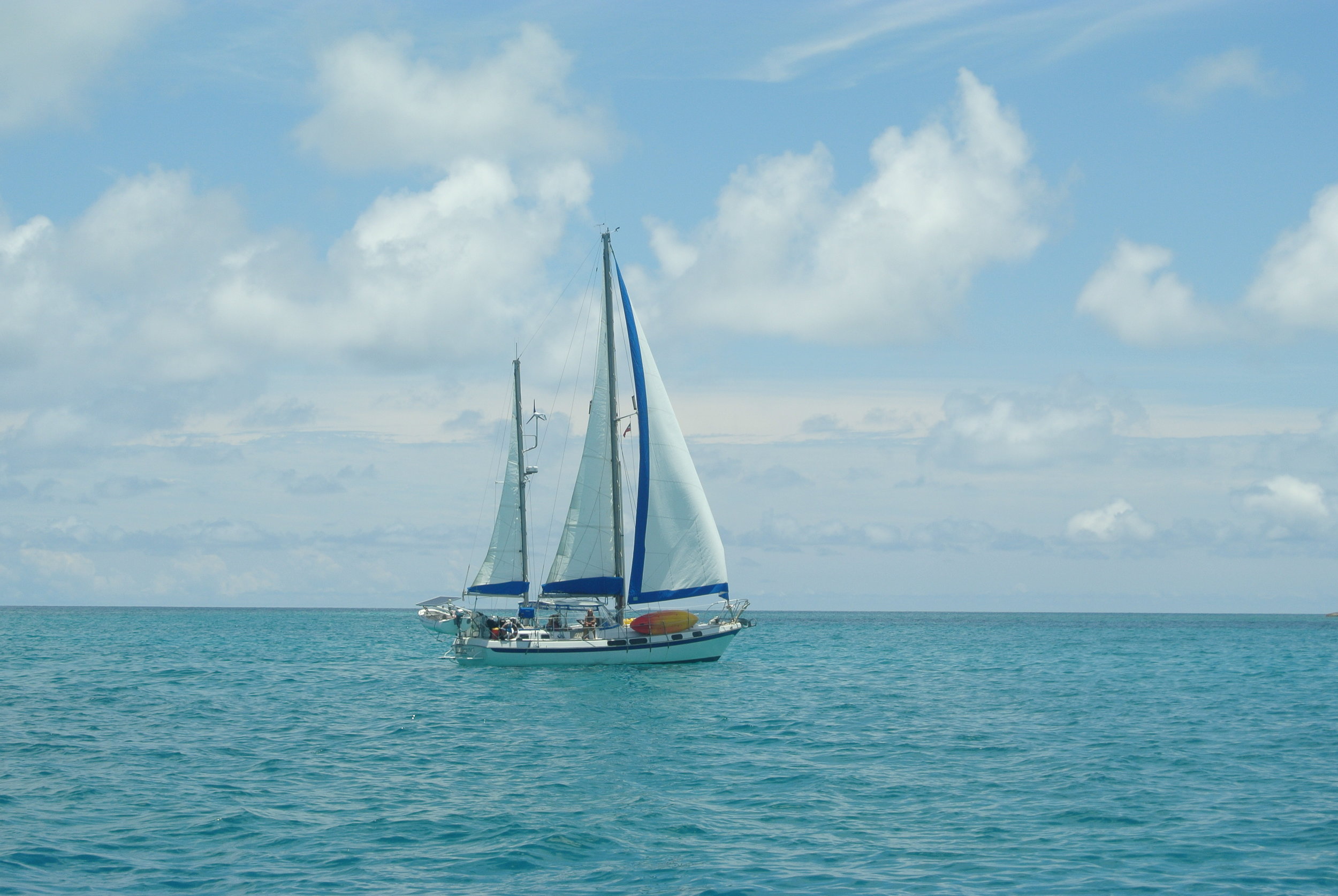They say the least used sail is the spinnaker; I would agree on that. Spinnakers require a lot of work to setup, sail, and strike. If conditions are not perfect, they can quickly become a handful and hold your yacht with the mast in the water until the problem is rectified. This means that few people get to encounter "spinnaker conditions" and those who flew it once won't ever make that mistake again.
While the spinnaker may be the least useful sail on a boat, I would say that its counterpart, the drifter, is the most useful sail to have.
When sailing in the Chesapeake Bay, our drifter would keep us moving on windless days. We would put it up for a few hours to keep moving while the winds died down. Once the winds returned we would strike it and put up the jib in its stead.
We liked our drifter but had no idea just how useful it is until we set out to cross the Atlantic Ocean.
We found ourselves trapped in the doldrums, and with our small electric motor, I mean trapped! There was no wind anywhere and we were not moving at all.
We set our drifter up and quickly began moving forward through the water. While we failed to set any speed records as we transited the doldrums, we were able to move at around 1 knot at all times. Some days we moved 20 miles, other days we moved 40 miles. After about 4 days in the doldrums, we finally found ourselves north enough that the winds began to build again!
Our drifter literally pulled us through the doldrums, bringing us back to the world of wind. On the northern part of the doldrums, we still fly the drifter at night.
This sail is great for downwind sailing, just like a spinnaker, but since it hanks onto the headstay, you have control as you strike it should the winds pick up too much. Downwind, the drifter fills beautifully and provides steady lee helm, this lets your wind steering guide you on a set downwind angle without the need to fight the mainsails' weather helm.
Since the main is not set, there is no noise from the boom or slating sail to keep off-watch crew awake.
For downwind sailing and ocean crossing, the drifter is the most versatile sail you can carry! But that's not all; unlike a spinnaker, a drifter can be sheeted in tight and used to sail upwind in very light conditions. This lets you (slowly) ghost around on light wind days without needing to rely on your motor.
If you are considering the purchase of a spinnaker, why not buy a similar sail that you will actually use?




